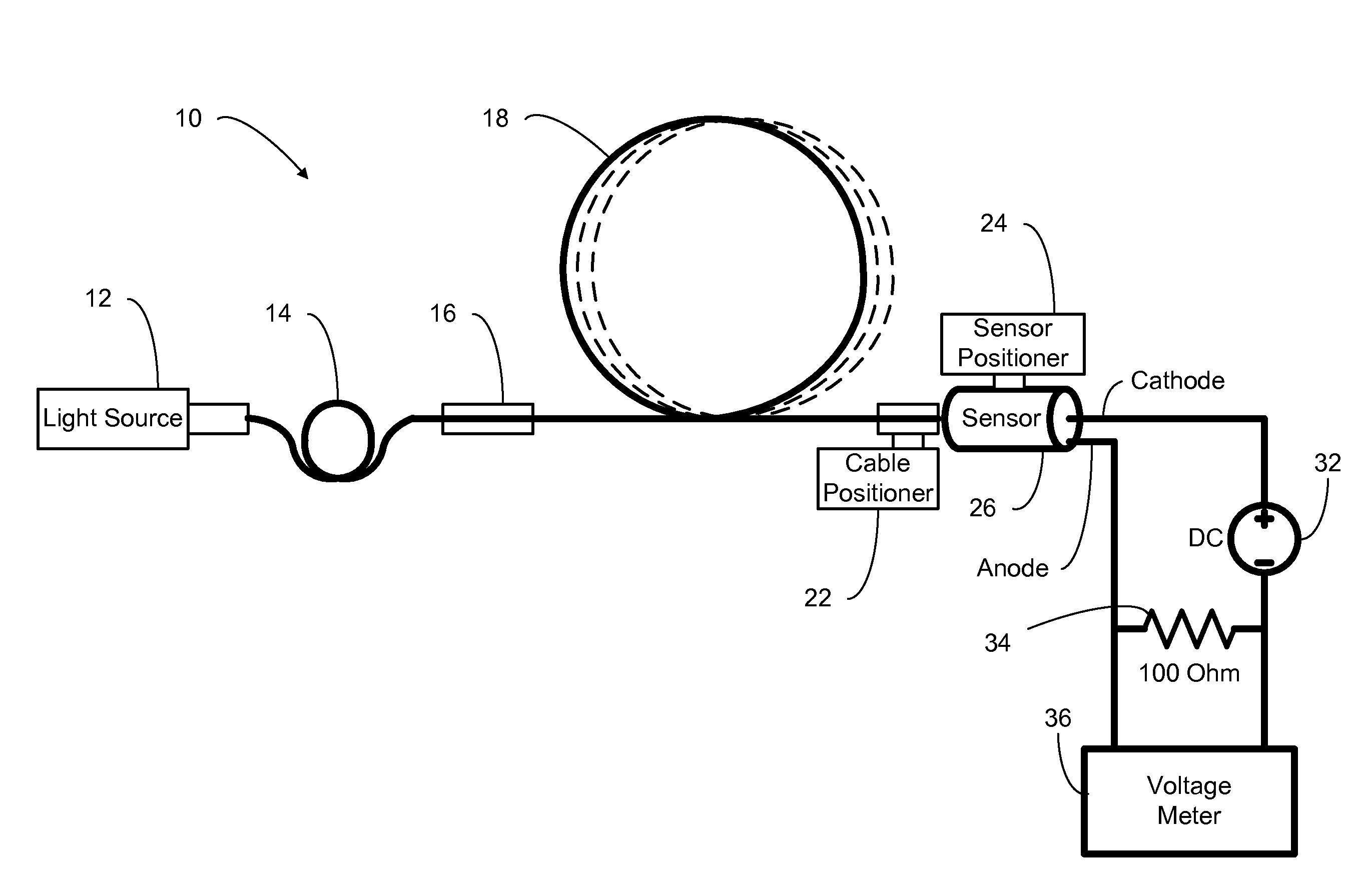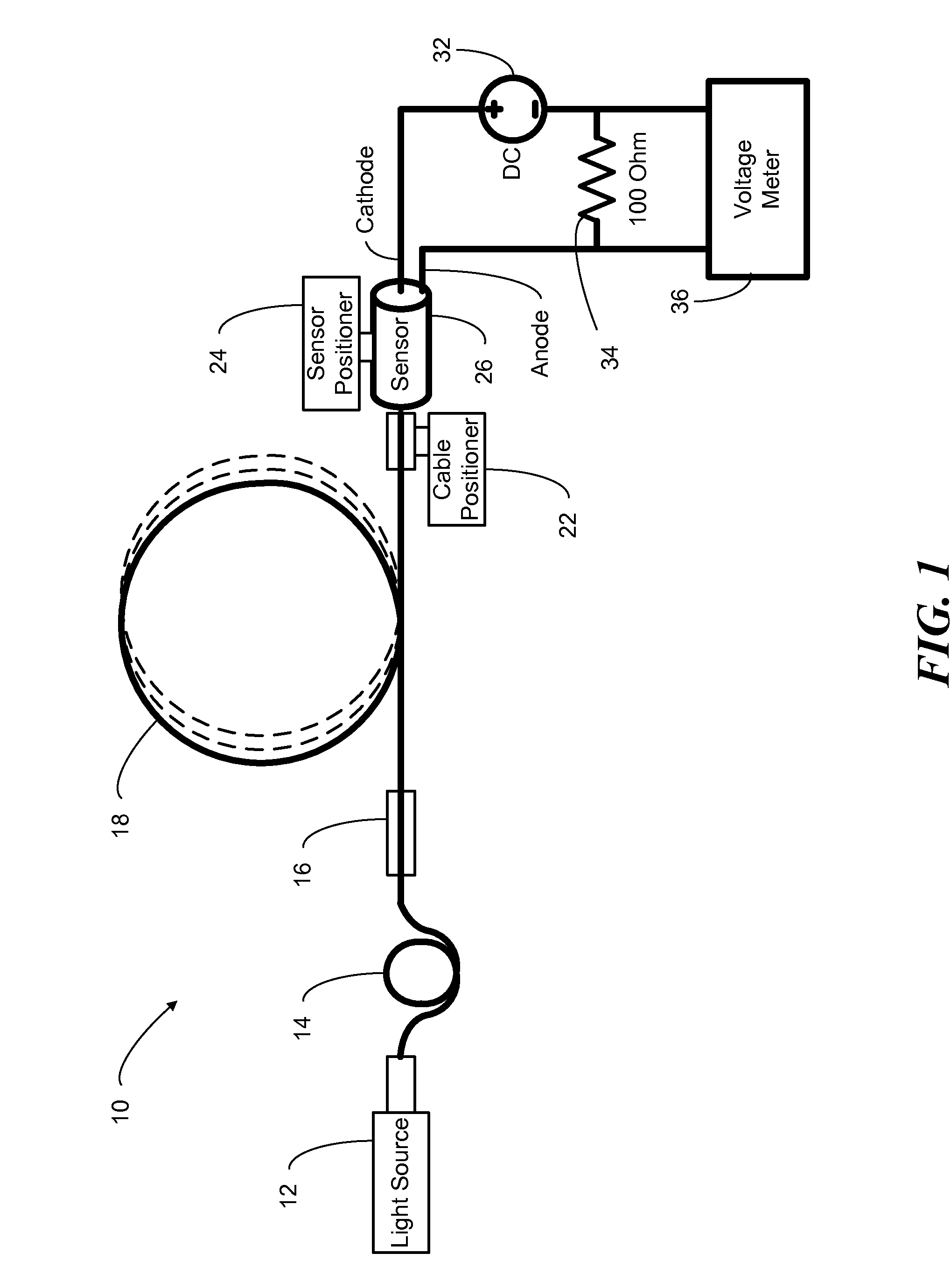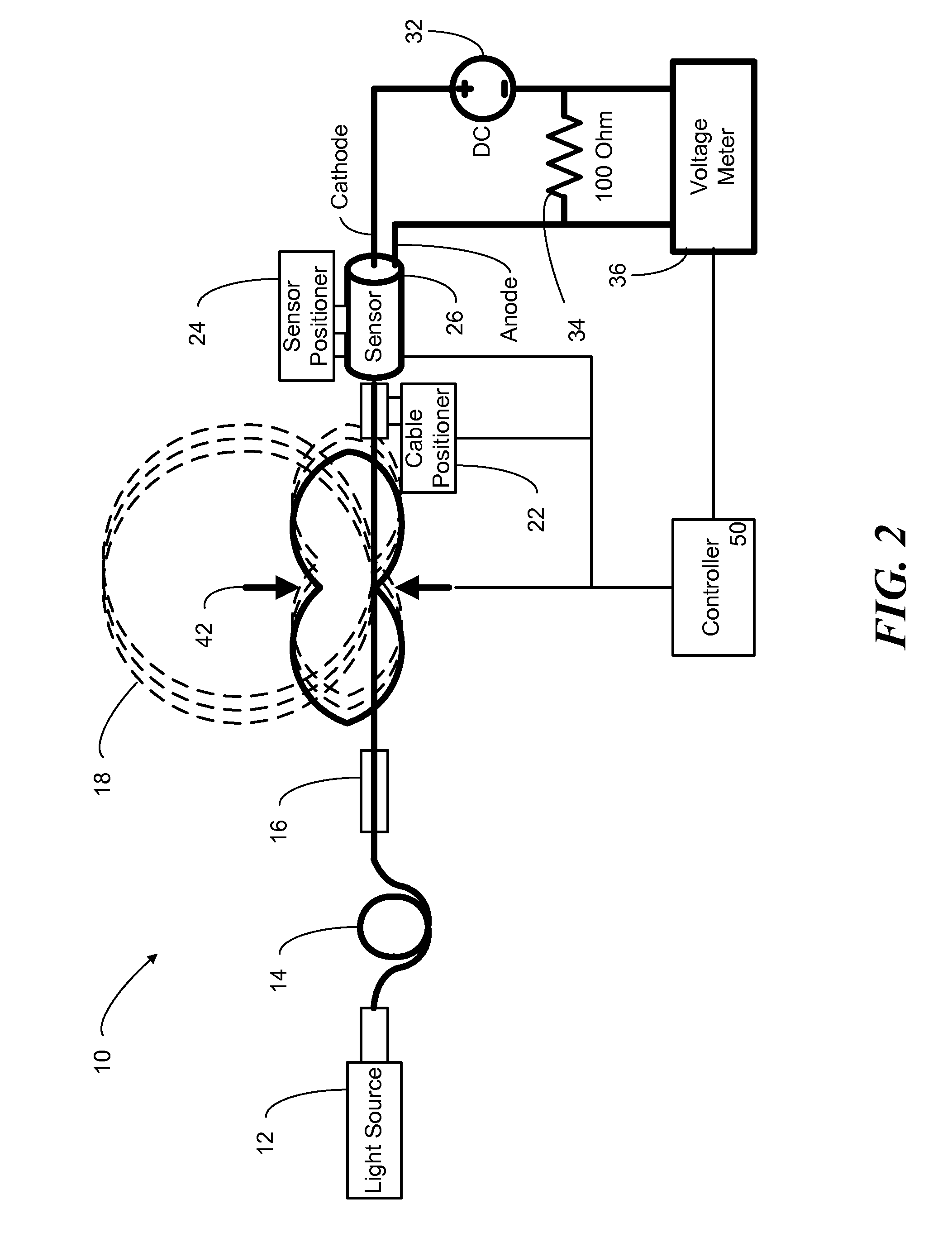Method and System for Coupling Multimode Optical Fiber to an Optical Detector
a multi-mode optical fiber and optical detector technology, applied in the field of multi-mode optical fiber coupling to optical detectors, can solve the problems of unstable signals received from optical detectors, multi-mode pigtails, and insufficient alignment of conventional manufacturing methods, and achieve stable output effects
- Summary
- Abstract
- Description
- Claims
- Application Information
AI Technical Summary
Benefits of technology
Problems solved by technology
Method used
Image
Examples
Embodiment Construction
[0022]Reference will now be made in detail to embodiments of the present invention, examples of which are illustrated in the accompanying drawings, wherein like reference numerals refer to the like elements throughout. The embodiments are described below to explain the present invention by referring to the figures.
[0023]Referring now to the drawings, FIGS. 1 and 2 show a simplified diagram of a photodiode coupling system 10, according to an embodiment of the present invention. System 10 includes a light source 12 (for example, a Fabry-Perot laser diode) coupled, at its output, to an optical fiber pigtail 14. Optical fiber pigtail 14 is preferably a single mode optical fiber designed to carry the wavelength of light energy produced by light source 12. Optical fiber pigtail 14 can be coupled by a mating sleeve 16 to a multimode optical fiber 18. Optical fiber 18 can be wound into a coil of one or more loops of less than ten inches in diameter. The fiber terminations of optical fiber p...
PUM
| Property | Measurement | Unit |
|---|---|---|
| diameter | aaaaa | aaaaa |
| threshold | aaaaa | aaaaa |
| frequencies | aaaaa | aaaaa |
Abstract
Description
Claims
Application Information
 Login to View More
Login to View More - R&D
- Intellectual Property
- Life Sciences
- Materials
- Tech Scout
- Unparalleled Data Quality
- Higher Quality Content
- 60% Fewer Hallucinations
Browse by: Latest US Patents, China's latest patents, Technical Efficacy Thesaurus, Application Domain, Technology Topic, Popular Technical Reports.
© 2025 PatSnap. All rights reserved.Legal|Privacy policy|Modern Slavery Act Transparency Statement|Sitemap|About US| Contact US: help@patsnap.com



